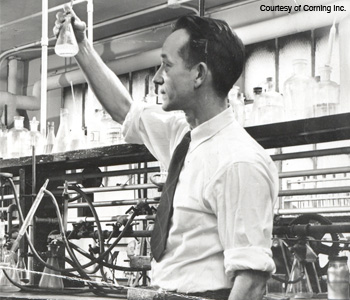Feature
Making the First Low-Loss Optical Fibers
Thirty years before the laser was invented, researchers laid the groundwork for another huge breakthrough in optics—the development of low-loss fiber for communications.
 Frank Hyde at work in his laboratory circa 1934.
Frank Hyde at work in his laboratory circa 1934.
It all began in 1930, when a young organic chemist named Frank Hyde was hired by Corning Glass Works to explore ways to combine the newly discovered organic materials called plastics with inorganic glasses to form glass-like materials. In the course of his investigations, he received U.S. patent 2,272,342, which was filed in 1934; the patent disclosed how vapors of silicon tetrachloride, when passed through a flame, would hydrolyze to form a fine powder (which he called soot) of pure fused silica glass. This would become a fundamental step toward realizing glass-based optical fiber.
…Log in or become a member to view the full text of this article.
This article may be available for purchase via the search at Optica Publishing Group.
Optica Members get the full text of Optics & Photonics News, plus a variety of other member benefits.
